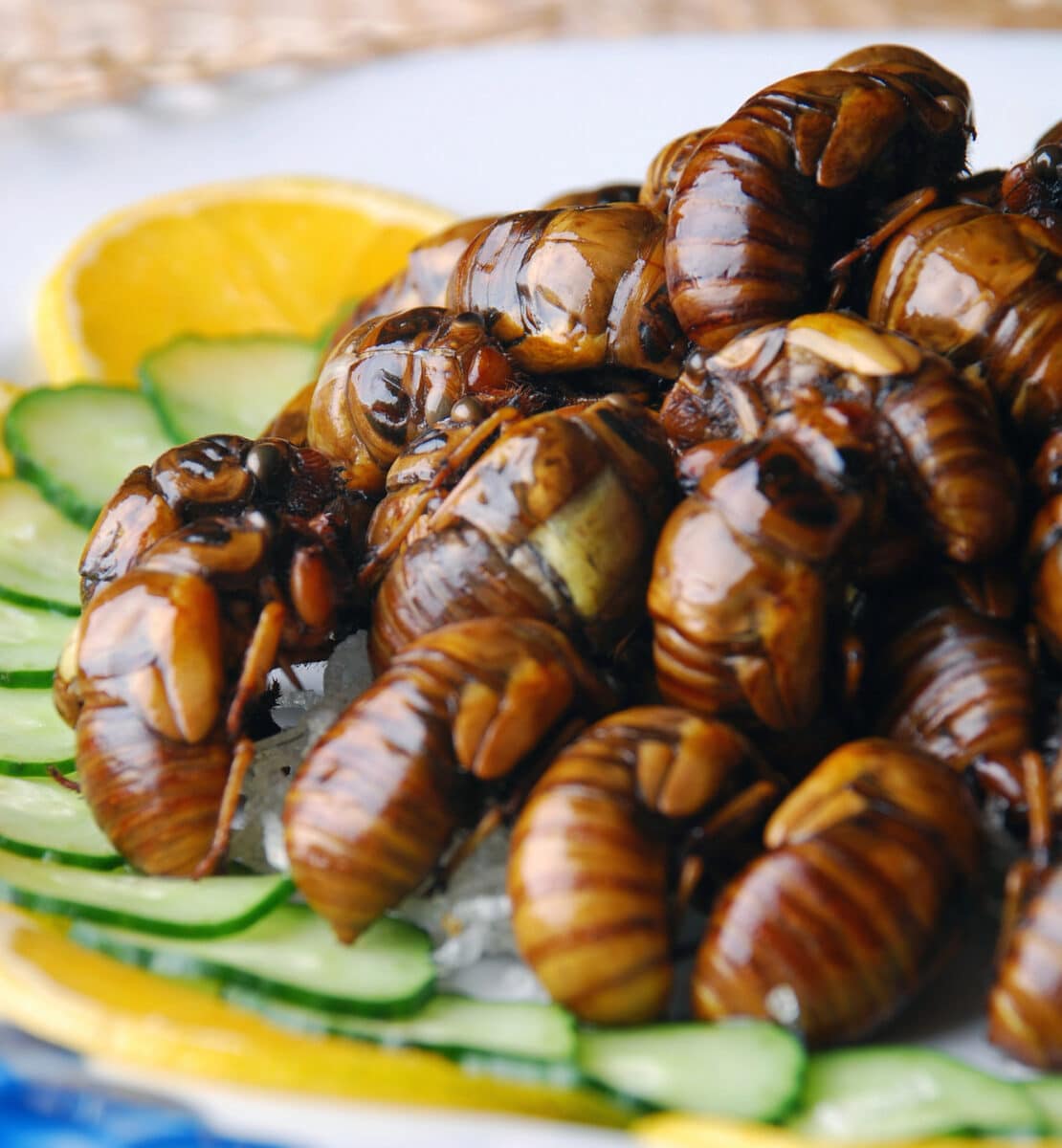The cicadas are here. And more are coming.
For the first time in over two hundred years, billions of cicadas are digging their way up from underground in a rare biological occurrence. Scientists are calling it a double brood emergence because two cicada broods will be above ground at the same time. Depending on where you live, you might have already seen them flying around or their infamous exoskeletons skins.
What are cicadas?
Much of the eastern United States can prepare for what one entomologist described as a “spectacular, macabre Mardi Gras” this spring. Periodical cicadas, which have the longest known insect life cycle, spend most of their life underground in an immature nymph form before surfacing from the ground every 13 or 17 years for a brief adult life. A brood constitutes multiple species of cicadas that merge on the same cycle.
Cicadas are more than just a fascinating natural phenomenon; they’re a culinary opportunity.
These insects, known for living underground for years before emerging en masse, have become the topic of both scientific study and adventurous eating. In an engaging discussion on NPR’s 1A, host Jen White spoke with Michael Raub, Professor Emeritus in the Department of Entomology at the University of Maryland, College Park. Known as “the bug guy” from his popular blog “Bug of the Week,” Raub shared his insights on the unique double brood emergence of cicadas—a rare biological event where two broods surface simultaneously for the first time in over two centuries. He also shared his enthusiasm for eating cicadas.
Eating Cicadas
Cicadas are not only a staple in the diets of many birds but are also edible for humans, offering a high nutritional value and a variety of tastes depending on their preparation. As culinary ingredients, cicadas present a unique opportunity for those willing to explore unconventional foods. When these insects emerge as nymphs, they are particularly suitable for cooking. They can be thoroughly cleaned and then prepared in several appealing ways.
Deep-fried, Tempura Cicadas
Joseph Yoon, chef advocate for the U.N.’s International Fund for Agricultural Development, and founder of Brooklyn Bugs, spoke on NPR’s Morning Edition about how to cook this year’s broods:
“They’ve been living underground, slowly feasting on plant and tree xylem for 13 or 17 years. And so they have this really beautiful vegetable quality and a nutty quality as well. And so when you deep-fry them, they’re just, like, so delicious and so special…My all-time favorite recipe utilizing the adult cicadas is a tempura-fried cicada…I ferment lentil beans, and I add cricket powder, and I make my own gluten-free version that also utilizes cricket powder for my tempura batter. But you can use, like, any classic tempura batter that you like that utilizes all-purpose flour, a little rice flour, a large egg and also ice-cold sparkling water, which will, like, really help create a light texture that you really want in this sort of tempura.”
Cicada Sushi?
“Preparation may depend on where you gather the cicada and which stage you find them at. But generally, he says, they can be deployed into dishes ranging from stir fry to tempura and kimchi and added to desserts.”
Sautéed, Roasted, Soft Shell
A simple and popular method is to sauté them in olive oil, adding flavors like balsamic vinegar and garlic to enhance their taste. For those who enjoy more spice, integrating Mexican spices can turn cicadas into a zesty dish. During their molting phase, cicadas develop a soft shell, making them easier to eat whole without the crunchy exoskeleton. This stage is often preferred for its ease of eating and preparation. Another interesting preparation involves roasting them on skewers.
For more reading about eating insects:
https://cms.thecookscook.com/columns/the-opinionated-cook/little-herds-a-case-for-eating-insects/
and
https://cms.thecookscook.com/columns/meat-insects-poultry-seafood/eat-insects-heres-why-and-how-to-give-it-a-try/

